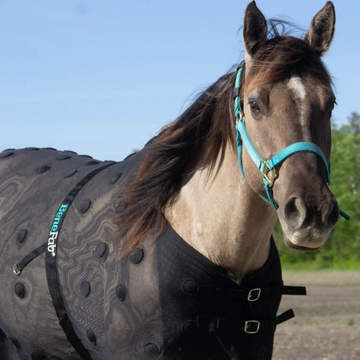We work hard to keep our horses healthy, happy, and safe. When it comes to legs, horses are easily injured and hard to heal. We’ve created this guide to explain some of the most common horse bandages, boots, and wraps so you choose the proper leg protection for your horse.
Why Use Leg Protection?
 Before your run to the tack store and buy every leg wrap, consider your horse’s situation. What do you do most? How does your horse move? Does your horse have old injuries, or is it prone to overreaching? Believe it or not, not every horse needs extra leg protection. If your horse is ridden occasionally and is not performing strenuous activities, it may be fine without added protection. However, if your horse has a past injury, hits their legs, or is performing high-intensity activities, additional protection can help prevent leg injuries.
Before your run to the tack store and buy every leg wrap, consider your horse’s situation. What do you do most? How does your horse move? Does your horse have old injuries, or is it prone to overreaching? Believe it or not, not every horse needs extra leg protection. If your horse is ridden occasionally and is not performing strenuous activities, it may be fine without added protection. However, if your horse has a past injury, hits their legs, or is performing high-intensity activities, additional protection can help prevent leg injuries.
An important note about leg protection for horses, a poorly wrapped polo wrap or improperly placed splint wrap, can cause more damage than good. Always consult your trainer if you need clarification on the fit or placement of a protective boot or wrap.
Type of Protective Horse Boots
Splint Boots/Brush Boots
Splint boots protect the splint bone and prevent the horse’s legs from hitting each other. Splint boots only provide protection, not support, and are a good option for all-around training. Splint boots keep the horse’s leg cool, are easy to maintain, and are durable. They are not recommended for high-impact disciplines.
Bell Boots
Bell boots surround the horse’s hoof, rather than the leg, and protect from overreaching. Overreaching is when a horse steps on the heel of the front hoof with the back hoof. This is primarily an issue for shod horses, as overreaching easily pulls the front shoe off while riding. Horses with big strides tend to need bell boots.
Open Front Boots
Open front boots protect the inside and back of the horse’s leg with a hard shell. These boots leave the front open so a jumping horse can feel the jump rail when they knock it. The idea is if the horse can feel the rail, it won’t hit it the next time.
Standing Wraps
Unlike the other boots and wraps we’ve discussed, standing wraps are not used for exercise. These wraps prevent fluid retention in the legs (stocking up) from insufficient movement or poor circulation when stalled. Horse owners can use standing wraps to keep liniments or wound dressings in place. Standing wraps are usually used over a quilted or fleece no-bow wrap.
Cross-Country Boots
Cross-country boots are ideal for riders who encounter water, such as eventers and trail riders. Unlike some other boots, cross-country boots don’t hold water, so your horse will be comfortable even after crossing a stream. The rugged exterior shell provides cannon bone protection for jumps and logs on the trail.
Polo Wraps
Initially designed for polo horses, polo wraps provide support and protection against minor scrapes. Polo wraps are versatile, and you’ll see them on Dressage, Western, and English horses. A poorly wrapped polo wrap can easily lead to a bowed tendon. Make sure to wrap your polo wrap correctly to provide support.
 The Benefab Therapeutic Polo Wraps take this a step further by providing far-infrared therapy, which reduces inflammation and increases mobility and circulation while providing gentle tendon support and leg protection.
The Benefab Therapeutic Polo Wraps take this a step further by providing far-infrared therapy, which reduces inflammation and increases mobility and circulation while providing gentle tendon support and leg protection.
Picking the Right Boots for Your Horse
Regardless of which type of leg protection you choose, ensure the wrap or boot fits your horse correctly. If this is a new type of wrap or boot, spend some time with your trainer learning how to correctly put the wrap on your horse to prevent injury. Finally, when shopping for leg protection, always look for good quality, durable, and breathable material.






















